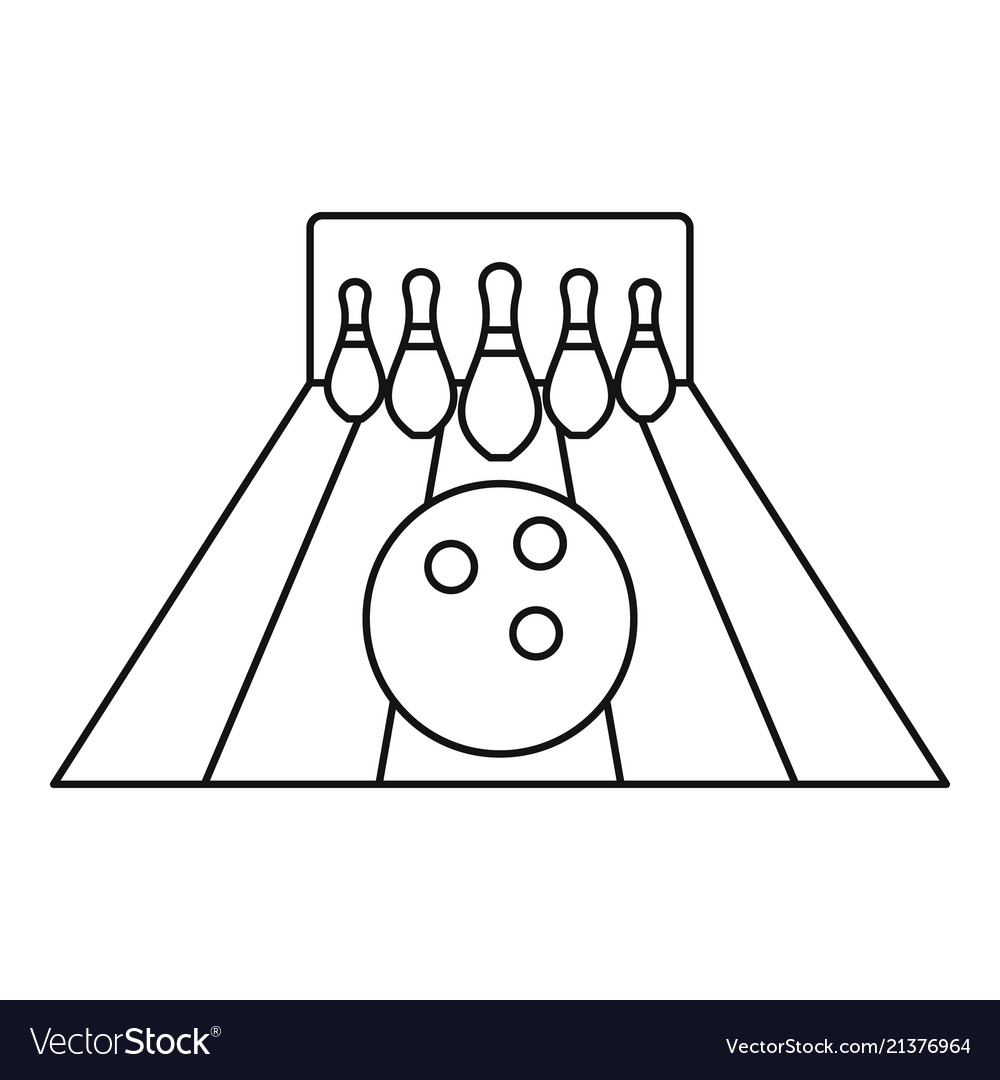Stone Street Oil Pattern: Mastering the Lane Strategy!
The Stone Street Oil Pattern is a challenging bowling lane condition designed for competitive play. It requires precise shot-making and adaptability from bowlers.
For bowlers looking to understand the intricacies of the game, mastering various lane conditions is crucial, and the Stone Street Oil Pattern presents a unique challenge. Unlike typical house patterns which offer generous oil in the center of the lane, the Stone Street layout is flatter and offers less room for error.
It tests a bowler’s ability to make consistent shots and adjustments, serving as a common condition in tournaments where high skill levels are showcased. Understanding this pattern can elevate a bowler’s game and is essential for those competing at advanced levels.

Credit: issuu.com
Stone Street Oil Pattern: Tips and Techniques!
Stone Street Oil Pattern—a term that echoes through bowling alleys with both intrigue and reverence. In the sport of bowling, the oil pattern applied to the lane can be a silent adversary or an ally, depending on a player’s knowledge and skill. The Stone Street pattern is particularly known for its challenging and distinctive design, which requires a strategic approach. In this section, discover the composition of bowling lane oil patterns and the specifics that make Stone Street a topic of discussion among enthusiasts and professionals alike.
Related Post:
- How do You Differentiate Oil Pattern Ratios for Different Lanes?
- How To Play on Kegel Arsenic Oil Pattern
- How to Attack on MHSAA Allen Oil Pattern?
- How to Attack on Challenging Big Ben Oil Pattern
- PBA Bear Oil Pattern
Understanding The Basics Of Bowling Lane Oil Patterns
Bowling lanes are not just polished wooden planks; they are canvases where oil patterns determine the fate of each roll. Understanding lane oil patterns is crucial for bowlers looking to step up their game:
- Invisible Influence: Oil patterns are not visible to the naked eye, but they greatly affect the ball’s trajectory.
- Length and Volume: Patterns vary in length and oil volume, impacting ball speed and angle.
- Breakdown and Transition: As games progress, balls alter the oil distribution, leading to changes in lane behavior.
The oil applied to the lane creates a level of unpredictability, making skillful adjustments and ball selection paramount.
Specifics Of The Stone Street Oil Pattern
The Stone Street Oil Pattern can be a puzzle for the uninitiated and a challenge for seasoned bowlers. Let’s delve into its characteristics:
| Feature | Description |
|---|---|
| Length | Typically spanning more than 40 feet, Stone Street is considered a medium-long pattern. |
| Volume | This pattern has a higher volume of oil, making it less forgiving for off-target shots. |
| Shape | With a distinctive shape that influences ball movement, understanding its nuances is key. |
Bowlers need to take into account these specifics to strategize and execute successfully on Stone Street. Tailoring equipment and adjusting techniques are integral parts of conquering this pattern.
Strategies For Mastering Stone Street
Bowling enthusiasts know that mastering the Stone Street oil pattern is a journey of precision, technique, and consistent practice. This complex pattern, known for its slickness and demanding nature, can be a formidable opponent on the lanes. To triumph over its challenges, bowlers must employ a strategic approach. In this comprehensive guide, we reveal key strategies to help you navigate and conquer the Stone Street oil pattern.
Assessing The Lane Conditions
Understanding the oil pattern’s intricacies before you roll the first ball is crucial. Stone Street typically exhibits a high volume of oil with a tricky distribution, which can affect how the ball reacts. Here’s how you can assess the lane conditions effectively:
- Observe the oil sheen to estimate oil concentration areas.
- Practice throws to gauge ball motion and hook potential.
- Monitor how other bowlers’ balls react to better understand transition and breakdown patterns.
Equipment Considerations For Stone Street
Choosing the right arsenal is pivotal for Stone Street. Consider these factors when selecting your equipment:
| Aspect | Consideration |
|---|---|
| Coverstock | Solid or hybrid coverstocks to battle heavy oil conditions |
| Core Type | Symmetric cores for smooth reaction, asymmetric for more aggressive backend motion |
| Surface Finish | Matte finish for added traction on oily surfaces |
Adjusting Your Technique For Optimal Performance
Modifying your approach and delivery is critical to thriving on Stone Street. Execute these adjustments for optimal performance:
- Employ a more controlled release, aiming for rev consistency.
- Adjust your starting position and target according to oil transition.
- Keep your speed in check; too fast and the ball might skid, too slow and it could overreact.
The Importance Of Spares On Tougher Oil Patterns
On challenging oil patterns like Stone Street, securing spares becomes even more essential. High strike rates are hard to come by, so your ability to pick up spares can make or break your game. Focus on these spare-shooting strategies:
- Practice shooting corner pins, as these are commonly left on tougher oil patterns.
- Adjust your aim or ball choice for spares to ensure precision and control.
- Stay calm and focused, as every pin counts significantly more when strikes are scarce.
Practical Insights And Pro Tips
Bowling on the Stone Street oil pattern is a unique challenge that separates casual players from seasoned professionals. Understanding this intricate pattern is essential for achieving consistent high scores and competing at advanced levels. With the right blend of skill and strategy, any bowler can turn the Stone Street into an alley of triumph. Let’s delve into actionable insights and top-tier advice to enhance your performance on this demanding lane condition.
Learning From The Pros: How Experts Navigate Stone Street
The key to conquering Stone Street lies in observing the tactics employed by professionals. Successful bowlers study the pattern’s design meticulously, noticing where the oil is applied most heavily and where it starts to dissipate. They know the importance of choosing the right equipment, opting for a bowling ball with the ideal surface texture and core dynamics to navigate the complex oil distribution.
Common Pitfalls And How To Avoid Them
- Overlooking the Lanes’ Topography: Never assume all lanes are identical; subtle variations can significantly affect ball reaction.
- Neglecting Ball Maintenance: Regularly clean and surface your ball to maintain optimal reaction and control.
- Ignoring Lane Transition: Be vigilant and ready to adjust as the oil pattern changes during play.
Practice Regimens To Enhance Your Skills On Stone Street
- Start with focused practice sessions, aiming for specific boards to refine your accuracy.
- Experiment with different speeds and rev rates to see how they affect the ball’s motion on Stone Street.
- Practice shooting spares without relying on the oil pattern to develop a more versatile skill set.
Adapting To Transition And Breakdown Of The Oil Pattern
As games progress, the Stone Street pattern will evolve, requiring bowlers to adapt. Pay close attention to your ball’s reactions and the performance of other participants. Track the transition and anticipate your moves – this entails shifting your starting position, target, or even your ball option. Stay ahead of the lane changes, and you’ll maintain a competitive edge no matter the oil pattern’s breakdown.

Credit: www.vogue.com
Competitive Bowling On Stone Street
Engage in the vibrant world of competitive bowling and you may find yourself on Stone Street,
a battleground revered by bowling enthusiasts. The Stone Street oil pattern presents
unique challenges to seasoned and amateur players alike, demanding precision,
strategy, and mental toughness. Bowling on Stone Street is not just about throwing strikes; it’s a
cerebral sport where adaptation and focus are your keys to victory.
The Role Of Stone Street In Tournaments
The Stone Street oil pattern is a critical element in numerous bowling tournaments,
setting the stage for an intense competition. The pattern’s oil distribution
affects ball motion significantly, differentiating it from the typical house shot.
Competitors must understand the pattern’s nuances to capitalize on its distinct advantages.
Building A Game Plan For Competition
Crafting a winning strategy on Stone Street involves analyzing the oil pattern
prior to the event. Successful bowlers choose their equipment wisely—selecting balls with the
right surface to combat the pattern’s slick terrain. Equally important is to establish a
shot-making blueprint that adapts to the transition of oil as games progress.
Psychological Aspect: Staying Focused Under Pressure
Beyond physical skill, mental fortitude is essential when competing on
Stone Street. Players often face high-pressure situations that test their resolve. The key
to maintaining composure is to stay present, concentrate on one shot at a time, and trust in
your preparation and ability to adapt swiftly to changing lane conditions.
Analyzing And Learning From Your Game Post-match
After the heat of competition, reflection becomes as important as execution. Post-match analysis
offers invaluable insights into your performance on the Stone Street oil pattern. By reviewing
each frame, players can identify areas of improvement and strategize more effective practice sessions.
Learning from both successes and setbacks fosters growth and prepares you for future challenges.
Also Read: Winding Road V2 Oil Pattern

Credit: www.wired.com
Frequently Asked Questions Of Stone Street Oil Pattern
What Is The Typical House Shot Oil Pattern?
A typical house shot oil pattern is a 38 to 42 feet long with higher oil concentration in the center.
How Do You Read A Kegel Oil Pattern?
Reading a Kegel oil pattern involves examining the graph for details like oil distance, volume, and forward/reverse oil application. Note the pattern’s length, symmetry, and breakpoint zone to strategize your play.
What Is Rule 31 In Bowling?
Rule 31 in bowling is a guideline suggesting that bowlers target their breakpoint 31 feet from the foul line, adjusting for oil patterns.
Are All Bowling Lanes Oiled The Same Way?
No, bowling lanes vary in oil patterns, affecting ball reaction and game strategy.
Related Post:
- How to Bowl on PBA Billy Hardwick Oil Pattern?
- 2023 USBC Nationals Oil Pattern
- PBA Cheetah Oil Pattern
- Boardwalk Oil Pattern
- Stonehenge Oil Pattern
- 2022 USBC Open Championships Oil Pattern
Conclusion
Wrapping up our exploration of the Stone Street Oil Pattern, we recognize the challenge it presents to bowlers. Mastering this pattern requires skill and adaptability. By studying its nuances, bowlers can refine their strategies, ensuring better scores and more enjoyment from the game.
Remember, the right approach and equipment are key to conquering Stone Street’s slick landscape. Keep practicing, and watch your game roll to new heights!

Passionate Bowler and Bowling Enthusiast
Jess Pinelli is a dedicated bowling enthusiast with a deep love for the sport that spans over 6 years. With numerous strikes, spares, and a few gutter balls under hes belt, he has honed his skills on lanes across the country. Pinelli’s journey in the world of bowling has been a remarkable one, from casual weekend games with friends to competitive league play and even a few local tournaments.
Driven by her passion for the game, Pinelli decided to channel her expertise and knowledge into the digital realm, becoming a prolific author on this bowling website. She’s your go-to source for everything bowling-related, from mastering the perfect hook to choosing the right bowling ball and even navigating the world of bowling etiquette.
When she’s not busy writing informative articles or reviewing the latest bowling gear, you’ll likely find Pinellis at her favorite local bowling alley, helping newcomers improve their game or enjoying some friendly competition with fellow bowlers. She firmly believes that bowling is not just a game but a community, and she’s committed to fostering that sense of camaraderie both online and offline.




